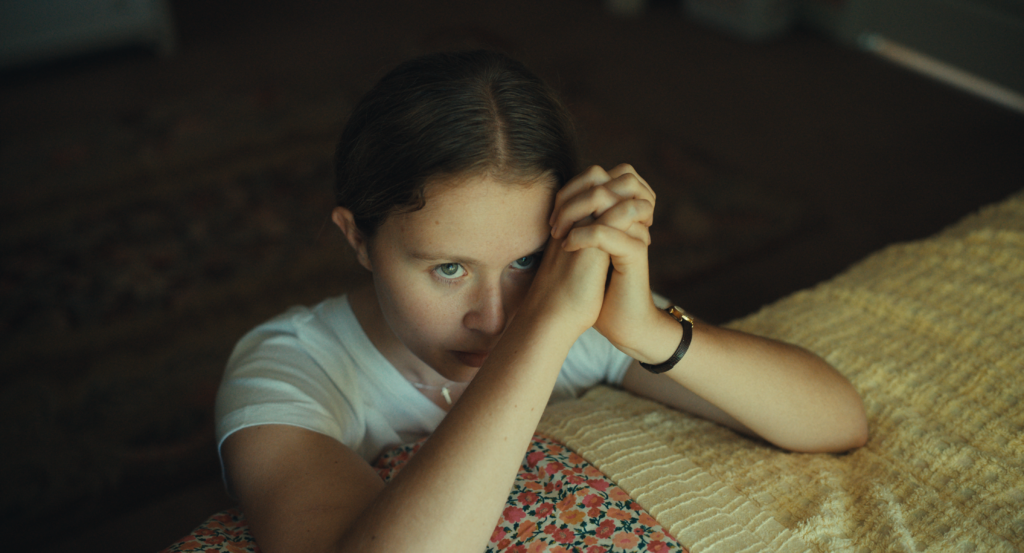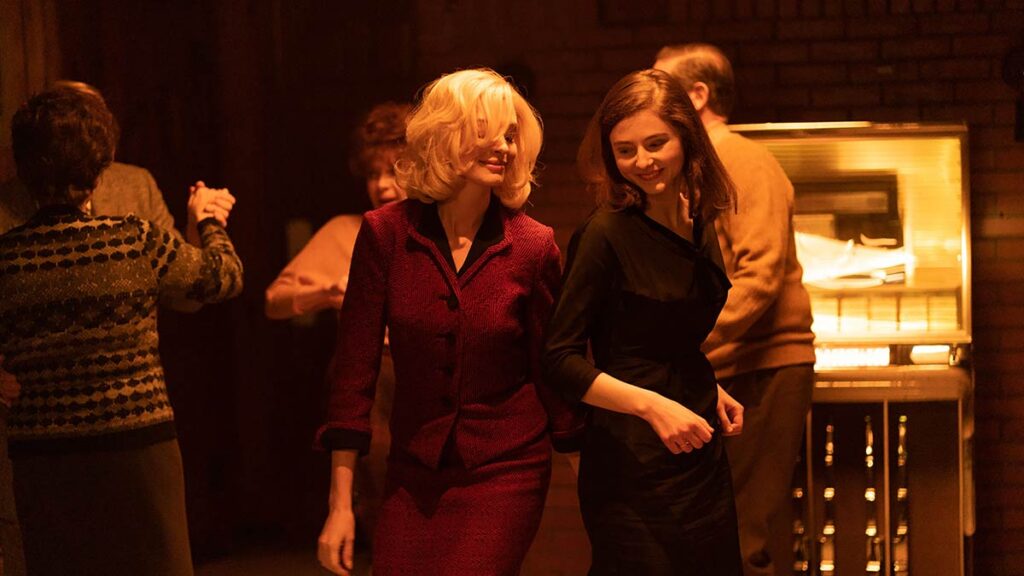by Carrie Rickey
This five-part Truthdig series by Carrie Rickey is published in partnership with Women and Hollywood. The series considers the historic accomplishments of women behind the camera, how they got marginalized, and how they are fighting for equal employment. Specifically, this series asks, why do females make up between 33 and 50 percent of film-school graduates but account for only seven percent of working directors? What happened to the women directors in Hollywood?
While female filmmakers waited for Judge Pamela Rymer to hand down a decision in the 1983 Directors Guild class-action suit against Warner Brothers and Columbia Pictures, alleging discrimination for not hiring women and ethnic minorities represented by the guild, there were positive signs of change in Hollywood.
In 1984, for the first time that almost anyone could remember, one needed two hands to count the number of feature films by women released in the U.S. market. One was Diane Kurys’ “Entre Nous” (1983), nominated for best foreign film at the Academy Awards in April 1984, making Kurys the second female director whose film was so honored.
Between 1950 and 1980, the number of movies directed by women in the Directors Guild of America (DGA) totaled 14. From 1984 to 1985 there were 12.
In 1984 many women were making their second features. Among them were Gillian Armstrong’s period drama “Mrs. Soffel,” Amy Heckerling’s gangster comedy “Johnny Dangerously,” Penelope Spheeris’ teenage-runaway saga “Suburbia,” and Amy Holden Jones’ romantic drama “Love Letters.” Martha Coolidge, beloved for “Valley Girl,” her 1983 debut, was on her third feature, “National Lampoon’s Joy of Sex.” With more women behind the movie camera in the United States than any time since the ’teens, it seemed that Hollywood was reopening the studio gates to women. Their movies featured women in lead roles.
The wave of optimism crested in 1985. Argentine director Maria Luisa Bemberg’s historical romance “Camila” (1984) was in contention for best foreign film. Susan Seidelman, an NYU film-school grad who made a splash in 1983 with the indie “Smithereens,” released “Desperately Seeking Susan,” starring “It Girl” Rosanna Arquette and Madonna, cast when the latter was a relative unknown. It was a runaway hit. Heckerling and Spheeris each released third features, respectively “National Lampoon’s European Vacation” and “The Boys Next Door.” Coolidge released her fourth: “Real Genius,” a genuinely funny nerd comedy with a fully developed female character — and special effects.
Then came the crash.
In August 1985 Judge Rymer handed down her decision. While the class-action case was important and viable, Rymer ruled, she had to disqualify the DGA from leading the class due to a conflict of interest. White male members also competing for directing jobs dominated the guild, she said. Thus the DGA was in no position to represent the interests of its women and ethnic minority members. Out of exhaustion and lack of money, the Original Six, the group of female filmmakers that had first spurred the DGA to initiate the suit, did not pursue it any further.
As the DGA suit played out during the early 1980s, Hollywood’s business model was in flux. Studios abandoned the one-size-fits-all strategy of advertising a movie in general-interest publications and embraced segmented marketing — that is, making and marketing movies to a specific demographic. Fewer dollars were spent advertising movies in mainstream newspapers and more were spent on ads that ran during TV shows young males were said to watch. More and more, movies starred predominantly men and boys. Because actors had higher-profile roles, they could command higher salaries than actresses.
By dividing the market into sectors, studios divided the audience and the culture. Boys see movies about boys. Older people see movies about older people. Women see movies about women. Those in different demographics no longer watch the same stories.
In 1980, four of the 10 top box office stars were women: Sally Field, Jane Fonda, Sissy Spacek, and Barbra Streisand. In 1990 there was only one: Julia Roberts. According to 1990 statistics from the Screen Actors Guild, not only were actresses underpaid, but they were also “undercast”: 14 percent of the leading roles, and only 29 percent of all roles, went to women.
The “Indiana Jones” trilogy made in the 1980s reflected the progressively diminishing role of females in film during a decade when male action/adventures dominated the multiplex. In “Raiders of the Lost Ark” (1981), the character Marion Ravenwood (Karen Allen) plays Indy’s helpmate. In “Indiana Jones and the Temple of Doom” (1984), the Willie Scott character (Kate Capshaw) is helpless. And in “Indiana Jones and the Last Crusade,” archeologist Elsa Schneider (Alison Doody) is the enemy.
Despite such trends, the late 1980s and 1990s proved to be boom years for female directors in Hollywood and Indiewood, as independent film is known. In 1987, Kathryn Bigelow, a onetime sculptor and graduate of Columbia University’s film program, made her second feature, the “vampire Western” “Near Dark.” And though Elaine May’s studio film “Ishtar” was almost universally panned upon release, it earned belated respect. Richard Brody of The New Yorker correctly described it as “an unjustly derided masterwork.” In 1987, six percent of films were directed by women, higher than at any time since 1916.
The percentage dropped in 1988, but that was a watershed year for female filmmakers. “Big,” a comedy from Penny Marshall (co-written by Anne Spielberg), was universally acclaimed. It was the first movie directed by a woman that surpassed $100 million at the box office. With the romantic comedy “Crossing Delancey,” Joan Micklin Silver returned to making big-screen fare, and her modest hit was well received. Also in 1988, Silver’s daughter, Marisa, made her second feature, “Permanent Record,” about teen suicide. “Salaam, Bombay!”, the first feature from Mira Nair, the India-born, Harvard-educated documentarian, was a best foreign film Oscar nominee.
The following year, “Look Who’s Talking” from Amy Heckerling likewise surpassed the $100 million mark for box office sales in the U.S. and made nearly $300 million worldwide. For the most part, though, heads of studios regarded Marshall’s and Heckerling’s box-office smashes as flukes. Two heads of production told me in 1991 that “movies by women don’t make money.” Nevertheless, it turned out to be a exceptional year for the quality and range of releases from women. And it shaped up to be a year when movies by female filmmakers did make serious money.
Some of the highlights of 1991: Julie Dash’s “Daughters of the Dust,” an evocative portrait of generations of Gullah women off the South Carolina coast circa 1901; Jodie Foster’s “Little Man Tate,” about a child prodigy emotionally torn between his mother and a psychologist for gifted children; and Mira Nair’s “Mississippi Masala,” a sexy romance about a South Asian woman born in Uganda (played by then-newcomer Sarita Choudhry) in love with an African-American man (Denzel Washington). Both Kathryn Bigelow’s action film “Point Break” and Barbra Streisand’s psychological study “Prince of Tides” examined the emotional costs to men who struggle to prove their masculinity. Bigelow’s movie grossed $83 million and Streisand’s $110 million. (Adjusted for inflation, that’s $148 million and $196 million in today’s dollars.)
Not only can female filmmakers make movies that show a different side of men, but they also make movies that show different aspects of women. Penny Marshall’s “A League of Their Own” (1992), about the All-American Girls Baseball Leagues during World War II, celebrates the athleticism (rather than the sexuality) of the female body. Nora Ephron’s “This is My Life,” her 1992 directorial debut about a single mom whose choice of comedy career affects her daughters, shows that career and motherhood need not be in conflict. Like Ephron’s film, Allison Anders’ “Gas Food Lodging” (also 1992) explores what happens when the children of single moms reconnect with biological fathers. Male directors were, and are not, making movies like these.
During the 1990s, almost every year brought a new evergreen made by a female filmmaker. In 1993 there were two. One was Jane Campion’s “The Piano,” a haunting allegory about a mute woman that struck a chord internationally. It earned $62 million at the box office and multiple Oscar nominations, including one for best director, making Campion the third woman to be cited in this category. The other was Nora Ephron’s “Sleepless in Seattle,” the comedic romance between two people who don’t meet in person until the last scene, which scored a $227 million box office.
“Sleepless” additionally introduced the questionable concept of the “chick flick” to a broader audience. This is a non-genre that has come to be defined as any movie that, according to the term’s proponents, women want to see and that men think they don’t want to watch — or any movie directed by a woman. The division between “chick flick” and its corollary, the “dick flick,” is a perhaps unintended consequence of target marketing, implying that movies represent a gender-linked proposition.
Almost overnight, the perception was created that movies predominantly featuring women, or “women’s interests,” or directed by women would shrivel the manhood of the male moviegoer. In 1994 the head of a major studio told me, without irony or shame, that “Women on the screen means no men in the audience.” When I asked him for data to back up his claim, he said he had it, but it was proprietary.
Despite such signs of cultural and corporate sexism, the 1990s were a good time to be a female filmmaker. In 1994, Gillian Armstrong’s “Little Women” was immediately embraced as a classic. Newcomer Darnell Martin’s “I Like it Like That,” an urban comedy about a working mother juggling job, marriage, and parenthood, earned positive reviews. And Rose Troche’s “Go Fish,” the first indie comedy about girl-on-girl courtship, marked a milestone for the burgeoning genre.
The following year, 16 films by women were in U.S. release, setting another record for that era. Many of them were comedies. There was Amy Heckerling’s “Clueless,” a droll version of Jane Austen’s “Emma” set at a Beverly Hills high school. There is Betty Thomas’ “The Brady Bunch Movie,” in which the former actress sets the characters of the 1970s TV hit in the 1990s to great comic effect. Distinctly not a comedy was Kathryn Bigelow’s “Strange Days,” a science-fiction thriller about sex crimes, which lost money but became a cult favorite. At the 1996 Oscar ceremony, with “Antonia’s Line,” Dutch filmmaker Marleen Gorris became the first female filmmaker to direct the award-winning foreign film.
But apart from Bigelow and Mimi Leder, a director of episodic television who in 1997 directed “The Peacemaker” and in 1998 “Deep Impact,” female filmmakers were not making action films. For the most part women made comedies and human stories, movies with no explosions in the opening scene. Veteran filmmaker Martha Coolidge spoke for many women when she noted that the scripts the studios sent her were for comedies or family dramas. “About 90 percent of what comes my way are ten different kinds of breast cancer stories, ten kinds of divorce stories, and ten kinds of women-taking-care-of-their-fathers stories,” she said. “I do those. I care about those deeply. But one does want to do more.”
Female filmmakers were typecast in the way many actors and actresses have been, for the most part pigeonholed in family drama and comedy genres. For example, in 1997 actress Kasi Lemmons made her directorial debut with “Eve’s Bayou,” a haunting family drama, and Betty Thomas returned with the Howard Stern biopic “Private Parts.” In 1998, Ephron returned with the romantic comedy “You’ve Got Mail.” Nancy Meyers, a long-time screenwriter, made her directorial debut with the family-friendly comedy “The Parent Trap,” and Brenda Chapman, a Disney animator, was one of three directors on “Prince of Egypt,” the animated story of Moses.
In 1999, three female filmmakers made rookie features unlike anything in American movies. Two were romantic dramas about teenage sexuality, the other an imaginative Shakespeare adaptation. Sofia Coppola’s “The Virgin Suicides,” based on the novel by Jeffrey Eugenides, looked at how boys look at girls, subversively turning the female gaze on the male gaze. Kimberly Peirce’s “Boys Don’t Cry” dramatized the life story of Teena Brandon, who changed her name and gender to become Brandon Teena and fell victim to a hate crime.
Julie Taymor, the theater director who created “The Lion King” on stage, made her movie debut with “Titus,” an anachronistic version of the Shakespeare history play “Titus Andronicus,” underscoring its parallels to Italy under Mussolini.
At the end of the decade — and century — of the 11,000 filmmakers working both in television and film included in the Directors Guild of America, about 2,300 were women. While women made up 21 percent of the membership, they comprised only 9 percent of the filmmakers working in movies.
Most, including Martha Lauzen, a professor at San Diego State University and the head of the Center for the Study of Women in Film and Television, naturally assumed that in the new century the needle would move toward 50/50.
In addition to writing film reviews and essays for Truthdig, Carrie Rickey has been a film critic at The Philadelphia Inquirer and Village Voice, and an art critic at Artforum and Art in America. Rickey has taught at various institutions, including School of the Art Institute of Chicago and the University of Pennsylvania, and has appeared frequently on NPR’s “Talk of the Nation,” MSNBC, and CNN.







